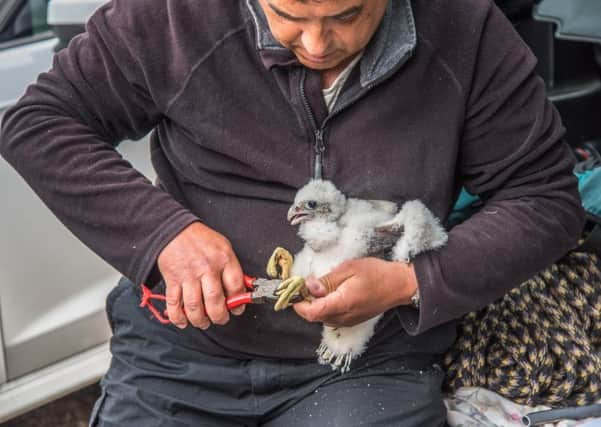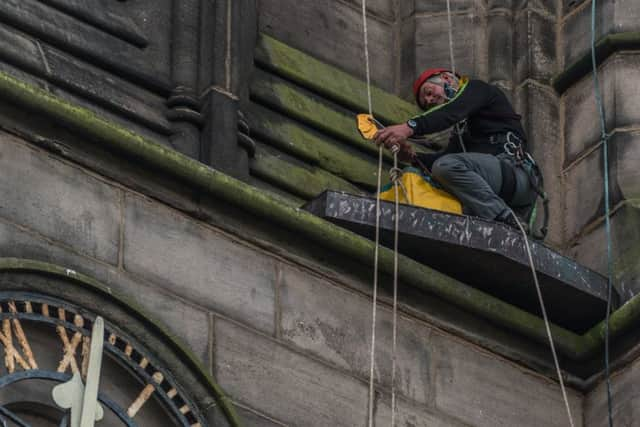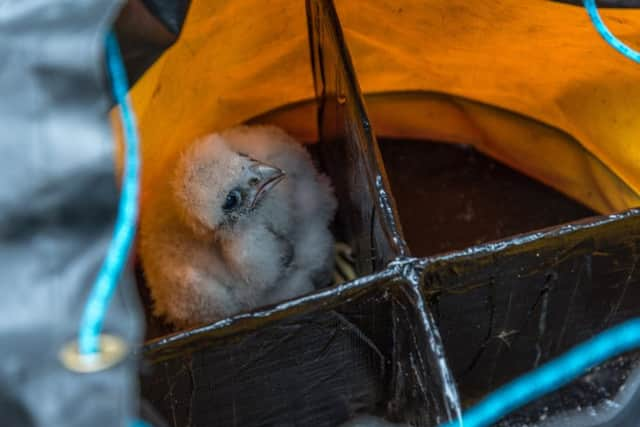No bats, but a falcon family in the belfry


Three chicks have hatched and have been snapped by photographers just above the clock on the side of the tower which faces hardware store Wilcock and Sons.
One photographer Alan Farrington, who is a member of the Anglican parish church in St George’s Street, said: “This is the second time we have had chicks.
Advertisement
Hide AdAdvertisement
Hide Ad“They use the Raven’s nest. There’s a box put on the side of the church which is where the mother nested and this year they have had chicks.


“To ring them somebody climbed up to the top of the tower on the inside of the church and abseiled down to the clock face on the outside.
“He took the chicks out of the nest and lowered them to the ground. The man on the ground then ringed them, recorded their details and sent them back up again.
“They are large chicks - three in all, two males and one female.
Advertisement
Hide AdAdvertisement
Hide Ad“You know when they are about because there’s bits of birds all over the place. It’s the pigeons that they are after.


“I was in town the other day and the parents were circling Gillibrand Street so they are about.”
Another photographer Dave Croasdale said: “We are privileged to have them in our town.
“We are all bird watchers, we photograph them and watch over them to make sure if one of the chicks fall we can get it help if needed and get it back to the nest.
Advertisement
Hide AdAdvertisement
Hide Ad“It wont be long now before they fledge and the fun starts - they’ll be exploring the ledge.


“We’re there just keeping a watchful eye over them.”
Female Peregrines normally lay a clutch of three or four eggs in late March or April. Both the male and the female bird then share the job of incubating the eggs. Each egg takes about 29-32 days before chicks hatch.
Peregrines are best known for their dives or stoops at prey. They have been clocked at more than 200 mph.
In level flight, peregrines can fly about 60 mph. They eat medium-sized birds, such as wading birds, pigeons and small ducks.


Advertisement
Hide AdAdvertisement
Hide AdBird watchers can see the falcons all year round. They are normally found nesting above rocky sea cliffs and upland areas throughout the UK in the breeding season.
The Peregrine has long, broad, pointed wings and a relatively short tail.
It is blue-grey above, with a blackish top of the head and an obvious black ‘moustache’ that contrasts with its white face. Its breast is finely spotted.
Peregrines were at a low point in the 1960s due to human persecution and the impact of pesticides in the food chain.
Advertisement
Hide AdAdvertisement
Hide AdImproved legislation and protection has helped the birds to recover and they have now expanded into many urban areas.
However, they are still persecuted - birds are illegally killed to prevent predation on game birds and racing pigeons, and also have eggs and chicks taken for collections and falconry.
Less than a third of peregrines reach breeding age. Those that do can expect to live five to six years.